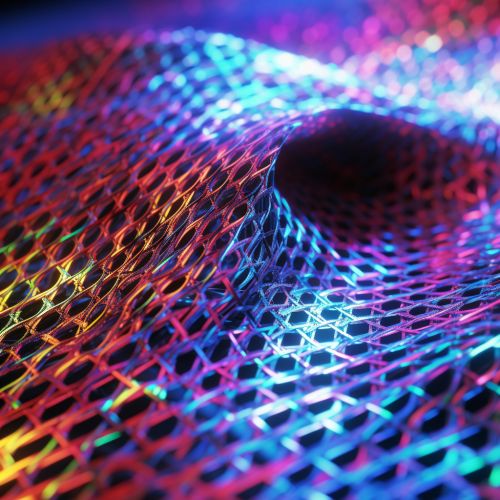Dielectric
Introduction
A dielectric is an electrical insulator that can be polarized by an applied electric field. When a dielectric is placed in an electric field, electric charges do not flow through the material as they do in a conductor, but only slightly shift from their average equilibrium positions causing dielectric polarization. Because of dielectric polarization, positive charges are displaced in the direction of the field and negative charges shift in the opposite direction. This creates an internal electric field that reduces the overall field within the dielectric itself.
Dielectric Polarization
Dielectric polarization is the shift in the position of the positive and negative charges in a dielectric material when it is placed in an electric field. This shift results in an internal electric field that reduces the overall field within the dielectric. The ability of a dielectric to support such polarization is expressed by its permittivity. The polarization of the dielectric can be caused by either an external electric field or by the presence of a material with a net surface charge.


Permittivity
Permittivity is a measure of a material's ability to store electrical energy in an electric field. It is denoted by the Greek letter epsilon (ε). The permittivity of a medium describes how much electric field (thus, how many lines of electric flux) is 'generated' by a given electric charge in that medium. More electric flux exists in a medium with a high permittivity (dielectric) than in a medium with a low permittivity.
Dielectric Strength
Dielectric strength is a measure of a dielectric material's resistance to breakdown under an applied electric field. It is usually expressed in terms of volts per unit thickness. The higher the dielectric strength, the better the material is at insulating. When the electric field applied across a dielectric material becomes too high, the material will suddenly start to conduct current, causing an electrical breakdown. This phenomenon is known as dielectric breakdown.
Dielectric Constant
The dielectric constant is a measure of a material's ability to store electrical energy in an electric field. It is a dimensionless quantity that is relative to the permittivity of free space. The dielectric constant is often used in physics and engineering to describe the electric properties of a material. It is an important parameter in many electronic applications, such as capacitors and transmission lines.
Dielectric Loss
Dielectric loss quantifies a dielectric material's inherent dissipation of electromagnetic energy. It can be parameterized in terms of either the loss angle δ or the corresponding loss tangent tan δ. Both of these parameters are based on the ratio of the energy dissipated to the energy stored in a material. Dielectric loss is a significant factor in the operation of real-world devices, as it results in energy being converted to heat.
Applications of Dielectrics
Dielectrics have a wide range of applications in various fields. They are used in the design and construction of electronic and electrical devices, including capacitors, transformers, power transmission lines, and radio frequency transmission lines. They are also used in the fabrication of integrated circuits and in the production of high voltage cables.
See Also
Capacitor Transformer Power Transmission Line Radio Frequency Transmission Line Integrated Circuit High Voltage Cable
